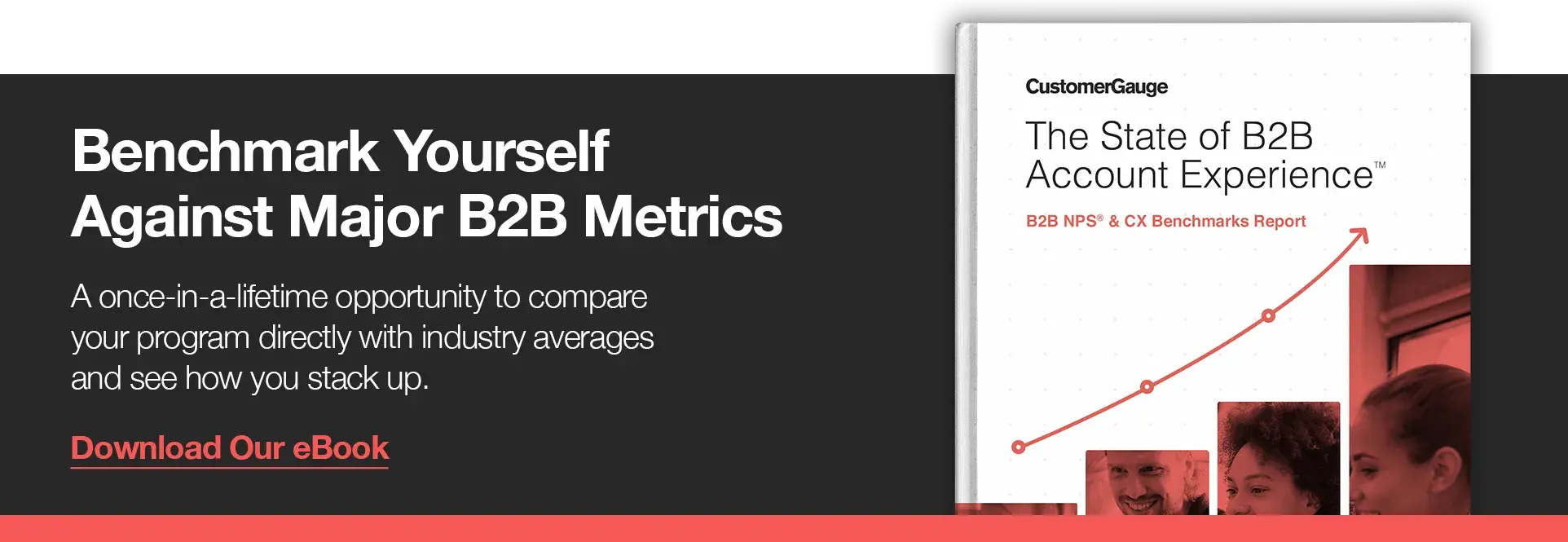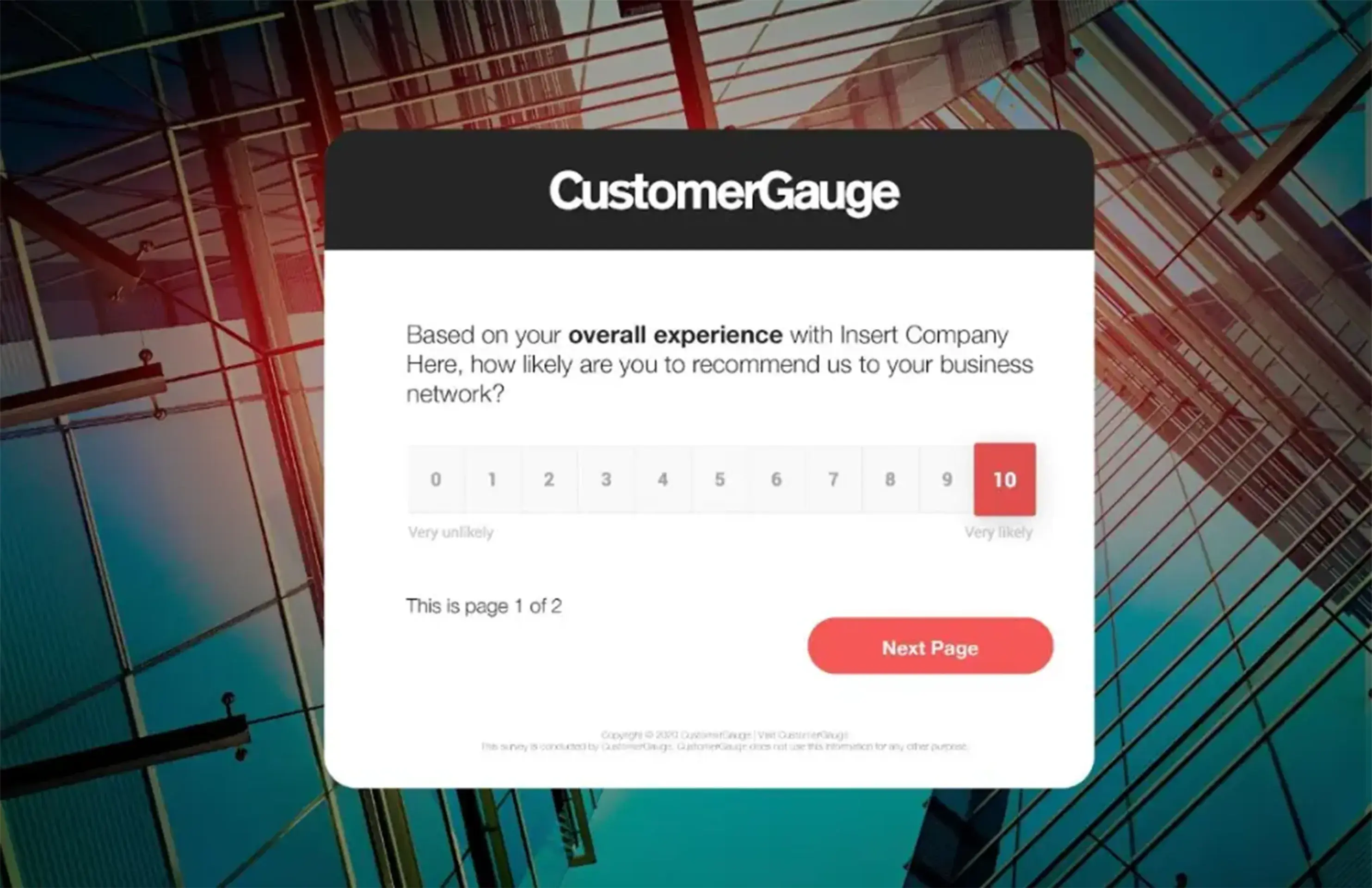Customer feedback is the beating heart of any effective customer experience (CX) program.
So, to pump your program full of valuable insights, you need a structured and strategic data collection method — one like Voice of Customer (VoC).
In short, voice of customer is the process by which you gather customer feedback from all of your accounts and at every touchpoint and dig into their experience, preferences, and expectations.
Armed with a regular understanding of your customer, you’ll be able to build stronger relationships with them, improve customer loyalty, grow account sizes, and win more referrals.
But do you need to gather this information in real-time for it to be truly effective? Not exclusively, no.
In this article, we explain why a mix of real-time and delayed feedback works best to enhance the overall customer experience.

What Are the Best Sources of B2B Voice of Customer Data?
Before we delve into the pros and cons of delayed vs. real-time voice of the customer, it’s essential to understand the types of B2B customer feedback methodologies available to you.
To start, VoC can be broadly split into two categories: active and passive feedback.
1. Active VoC
Active VoC methodologies are those in which you ask your customers directly for their feedback.
They require you to go out and talk to your customers about their experience. Typically, this is done after specific touchpoints, like a purchase, or at a particular point in time (such as every month or once a quarter).
Active VoC feedback methods include:
Customer surveys. One of the most common ways to gather valuable feedback, sending out a survey after an interaction lets you capture insights quickly while the experience is still fresh in the customer’s mind. Net Promoter Score (NPS) is the most widely used survey system for B2B brands.

Customer interviews. Conducting interviews can be a great way to quickly get to the root of a customer’s feelings regarding specific product or service issues or their customer experience overall.
Focus groups. An extension of the customer interview approach, focus groups bring together a small band of customers into the same room, or online space, to share their views about your company and brand.
Check out our Voice of Customer Benchmarks to see how your company ranks here.
2. Passive VoC
The opposite of active, passive feedback involves your customer offering up insights without being prompted. This requires your company to monitor key channels and mine data for more information.
However, utilizing a tool like CustomerGauge that gives you access to ‘always on’ channel feedback makes listening to what customers have to say easy.
Passive VoC feedback methods include monitoring:
Live chat. A growing trend among B2B businesses, a live chat widget allows your customer support staff to field queries and resolve complaints from your website.
Other website behaviors (and SaaS usage). Whether on your website or your SaaS platform, understanding how your customers interact with your brand, service, or product can provide a treasure trove of learnings.
With CustomerGauge’s Account Experience platform, you can get a 360-degree view of your customers’ behavior, including how they are engaging with your site and software.
Social media. Popular with B2C brands, social media is a rich source of VoC data for B2Bs, too. Many professionals use Twitter or LinkedIn to ask for recommendations, leave reviews, or vent about a B2B product or service.
Customer review sites. Third-party review sites like Yelp or Trustpilot can be a goldmine for VoC data, helping you passively gather insights from both positive and negative reviews before following up and resolving any issues.
Historical support call data. Using recorded support call data, you can pick up on trends and gain a broader understanding of how your customers perceive your brand.
Some of these approaches can happen in real-time (interviews, focus groups, live chat, social media), while others are delayed.
As we’ll discover in the next section, there are pros and cons to both.
Delayed vs. Real-Time Voice of the Customer
What Are the Pros of Real-Time Voice of Customer Signals?
The clearest advantage of real-time VoC is that you can enhance a customer’s experience while interacting with them.
Whether that’s by resolving an issue via live chat or digging deeper into a problem through a customer interview, you have the opportunity to turn an unsatisfied customer into a happy one.
According to Albrecht and Zemke in their book, Service America! if a customer complaint is resolved, between 54% and 70% will buy again.
But if that complaint is resolved quickly? The figure shoots up to 95%.
CustomerGauge’s client, Intuitive Health, was able to achieve an NPS score of 81 (23 points above the health industry’s average score) by surveying all patients within 24 hours of their visit and acting on feedback within 48 hours.
Learn more here: Voice of Customer Examples From 6 Leading Companies
What Are the Cons of Real-Time VoC?
Collecting customer feedback in real-time can sometimes be affected by what’s known as “recency bias” — the tendency to place too much emphasis on experiences that are freshest in the memory.
For example, if a customer’s experience throughout their journey was largely positive, but they encountered an issue towards the end such as late delivery or a software bug, their overall perception of your brand/product/service might be skewed towards the negative.
The other issue with real-time VoC is that it can sometimes be an overwhelming data collection method. If feedback is coming thick and fast (and in real-time), it can be hard to know where you need to direct the information.
That’s where CustomerGauge’s Account Experience platform can help. You can pull all of your VoC data, real-time or otherwise, into one platform, routing the right insights to the right people at the right time.
What Are the Pros of Delayed VoC?
The main advantage of tracking delayed Voice of Customer signals is that time is on your side.
You can methodically gather the feedback, analyze it, categorize it, and delegate actions to the right people without the pressure of a customer awaiting an almost immediate answer or resolution.
Furthermore, some forms of delayed feedback tend to be more considered and less likely to be led by emotion in the heat of the moment. For instance, sending out a survey a few days after a bad experience could give your customer the space they need to reflect and provide a more measured response.
What Are the Cons of Delayed VoC?
The downside of delayed VoC signals is that if you don’t act fast, you could make decisions based on outdated information. Time might be on your side, but you can’t get complacent.
Whether you’re running quarterly NPS surveys or conducting sentiment analysis on recorded support call data, you need to be organized and ready to route feedback to the appropriate department.
And time isn’t just an issue for you! The longer you leave things between interaction and surveying your customer, the less likely they are to remember the finer details of their experience.
With a state-of-the-art Survey Builder and reporting suite built into Account Experience, you can automate customizable survey campaigns across channels to collect feedback that breeds actionable insights in a timely manner.
So, Do You Need Real-Time VoC to Enhance Customer Experience?
Yes, but tracking VoC in real-time alone isn’t always possible.
Instead, you need a mix of real-time and delayed methods to paint a realistic picture of your CX program. That way, you can take action quickly (sometimes instantly) when required, but you can also collect and reflect on data, track trends and set benchmarks, and drill down into specific touchpoints.
Ultimately, the end goal remains the same.
Whether it was gathered in real-time or hours, days, or weeks later, you need to follow up with your customer feedback quickly to close the loop on negative feedback.
Account Experience: The Voice of the Customer Methodology & Software Built for B2B Enterprises
CustomerGauge can deliver accessible, actionable customer experience insights for your company through our B2B Voice of the Customer offerings.
We’ve built an entire methodology and approach, especially for you, and it’s extremely effective (read our one-pager here).
Using our real-time dashboards, alerts, and customer journey maps, your company can close the loop with your customer base and identify areas for improvement.

